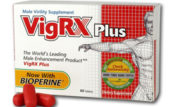 Rest easy – we won’t explore the inner workings of the colon with graphics in this article. I’ll save you that pleasure for the inside of a doctor’s office. But…we’re going to talk about colon cancer.
Rest easy – we won’t explore the inner workings of the colon with graphics in this article. I’ll save you that pleasure for the inside of a doctor’s office. But…we’re going to talk about colon cancer.
You’re familiar with the colon, right? It’s the last stop in your digestive system. Found within your large intestine, your colon removes salt and water from solid waste before excretion. While it doesn’t play a large role in the digestion process, it assists with bacterial fermentation of unabsorbed material and absorbs water and fat-soluble vitamins.
And yet, while this unassuming, if not slightly unappealing organ of the human anatomy may quietly go about its daily work – allowing you to eat, sleep and live in relative harmony – it’s also the perfect environment for the second-leading cause of cancer deaths in the United States.
About Colon Cancer
Colon cancer is a cancer of the colon or rectum. Sometimes called colorectal cancer, it most often starts as a growth, called a polyp, in the colon’s lining. Left untreated, it can spread through the surrounding tissue and beyond the bowel, to other organs. Like any cancer, survival increases with early detection and intervention.
Symptoms can appear sporadically. While some patients may have no warning signs that something’s amiss, other patients may experience:
abdominal pain and tenderness
bloody stool
diarrhea, constipation or other changes in bowel habits
unexplained weight loss
narrow stools
Nice huh?
Colon cancer is most common in developed nations. The U.S. Centers For Disease Control and Prevention estimates about 137,000 new cases in the United States each year, with 52,000 deaths on an annual basis.
If there’s a silver lining to the issue it’s that colon cancer is often preventable. In many cases, you can reduce your risk of this common taker of lives with some basic changes to diet, lifestyle and living habits.
How Do You Get Colon Cancer?
You get colon cancer with a combination of factors, including the foods you eat, the vices you partake in, and a few things that are beyond your control.
Research continues into the causes of colon cancer. We do know your risk goes up with:
Age – Colon cancer typically hits past age 60 (although it can strike younger).
Race – African-Americans and people of east European descent are at higher risk.
Red meat consumption – Red and processed meats appear to significantly increase risk of colon cancer.
 Colorectal polyps – These need to be dealt with before they turn into something far more serious.
Colorectal polyps – These need to be dealt with before they turn into something far more serious.
Smoking – One of the vices.
Alcohol consumption – The other one.
Inflammatory bowel disease – Patients with a history of inflammatory bowel disease – that’s Crohn’s or ulcerative colitis – are more likely to develop colon cancer.
Family history – Colon cancer can pass down through your genes.
History of breast cancer and two genetic diseases, famidial adenomatous polyposis (FAP) and hereditary nonpolyposis colorectal cancer (HNPCC) – also called Lynch syndrome – are risk factors too.
Screening
Your chances of surviving colon cancer increase the earlier you detect it. In particular, the U.S. Preventative Services Task Force recommends three screening tools for adults over the age of 50.
Note that these screening methods aren’t pretty, and probably rank up there with having a root canal in terms of pleasantry. But it’s a good idea to perform at least one of or a combination of the three screening methods described here regardless. The younger you start, and if done annually, you may be able to get away with the first method only – speak with your doctor for more information.
The fecal occult blood test (FOBT) is the easiest (and least expensive) of the three. It’s simple to do as well – just swipe your stool on a disposable pad, note the results, dispose of the pad (please!) and send your observations to your health care provider.
The sigmoidoscopy is more intrusive, but allows for a more thorough examination of what’s happening inside. In this procedure, doctors insert a tube fitted with a tiny camera through the rectum and search for precancerous growths. As well, this allows doctors to take samples of tissue for further examination.
Notably, the sigmoidoscopy is not ideal for screening the sometimes difficult-to-navigate right side of the colon.
Finally, the colonoscopy is perhaps the best-known way to screen for colon cancer, and allows for the most comprehensive examination. The procedure consists of a long, flexible instrument, called a colonoscope, fitted with a tiny camera and inserted through the rectum and into the colon. Though more invasive, this procedure is proven effective for both sides of the colon and is arguably the most effective screening tool.
 Medicare and many health care providers will often cover the cost of a colonoscopy, which costs about $3000 and takes between 30 and 60 minutes to perform.
Medicare and many health care providers will often cover the cost of a colonoscopy, which costs about $3000 and takes between 30 and 60 minutes to perform.
Both the sigmoidoscopy and the colonoscopy require preparation. Your doctor will recommend dietary modifications, including no solid foods, for several days before the procedure. You may also be required to take oral laxatives for several days to clear out the bowel and allow doctors a comprehensive examination.
If it sounds like a lot of work, it is. And yet, it’s essential. A recent study reveals that improper cleansing before the procedure hinders doctors from finding polyps. In turn, there are many cases of advanced colon cancer that get missed simply because the patient didn’t take the time to properly follow the preparation guidelines.
That’s unfortunate, because, when done correctly (and preferably every ten years starting after 50), the colonoscopy is a very effective screening tool.
Colonoscopies May Cut Advanced Colon Cancer Risk By 70%
A new study, released this year, reveals why you should follow the U.S. Preventative Services Task Force’s recommendations: regular screening with a colonoscopy may reduce risk of advanced colon cancer by up to 70%.
And unlike screening with an FOBT or sigmoidoscopy, the colonoscopy is effective for screening both sides of the colon – including the right.
In the study, published in the March issue of the Annals of Internal Medicine, study author Dr. Chyke Doubeni of the University of Pennsylvania and his team endeavoured to answer two basic questions that previous research had not addressed: if a patient was diagnosed with late-stage colon cancer, were they likely to have had a colonoscopy in the ten years leading up to that diagnosis?
They also wanted to determine whether the colonoscopy was an effective screening tool for both sides of the colon, as the right side is more difficult to cleanse and examine, yet is just as susceptible – if not more – to precancerous growths as the left side.
 With these objectives, the researchers analyzed the health records of 1,000 average risk adults between 55 and 85, all of whom were members of four health management organizations.
With these objectives, the researchers analyzed the health records of 1,000 average risk adults between 55 and 85, all of whom were members of four health management organizations.
From these subjects, the team identified 474 patients with late stage colon cancer, and looked over each patient’s medical history to determine if they’d undergone a sigmoidoscopy or colonoscopy in the previous decade. They next compared these results to 538 ‘control’ patients and used additional information from state or tumor registries to further analyze the link between screening with a sigmoidoscopy or colonoscopy and developing cancer.
Among their findings: the colonoscopy was effective for screening both sides of the colon. And significantly, screening with a colonoscopy drastically reduced risk of advanced colon cancer.
The study did not answer whether a sigmoidoscopy or colonoscopy were more effective for screening than an FOBT. And for his part, Doubeni says that current evidence does not suggest that a colonoscopy is preferable to doing a FOBT – provided you do the latter each year.
Add it up however and there’s a common theme: get screened for colon cancer. For adults between 50 and 75 that means following the U.S. Preventative Services Task Force’s recommendations of either a FOBT every year, a sigmoidoscopy every five years combined with a FOBT every three years, or a colonoscopy every ten years.
Speak with your doctor for further information.
How to Reduce Your Risk
What’s good for your heart is good for your brain. Actually, it’s good for your colon too, according to this list of ways to prevent colon cancer at Health.com.
Remember also that we’re still learning about colon cancer and the factors that may increase your risk. Current evidence suggests there’s no one cause, but a combination of factors most likely contribute to this cancer that, at about 608,000 deaths in 2008, ranks way up there as a leading cause of preventable deaths.
In a 2011 study of Chinese men, participants were 54% less likely to develop colorectal cancer if they drank green tea on regular basis.
Pop an occasional aspirin – Non-steroidal anti-inflammatories, which you may know as aspirin, appear to benefit people at high risk of colon cancer. The key here is ‘occasional’, as long-term use of NSAIDs is linked to gastrointestinal bleeding. As a general rule of thumb, if you’re at risk of heart attack, a baby aspirin a day should probably be OK. Consult with your physician about this one.
Don’t smoke – Come on, do we really have to tell you this? You know it’s bad for your heart and lungs, but smoking’s no friend of your colon either. People who puff are 25% more likely to develop colon cancer, according a 2008 study. That risk goes up to 50% for people who smoke for 40 years, says the American Cancer Society.
Limit red meat – This hurts, but that sizzling porterhouse on the barbie doesn’t do your intestines much good. Neither do foods that have been processed, smoked or are high in salt. Watch your bacon and sausages – and that hot dog at the ball park – and limit red meat to two four-ounce portions a week.
Watch your booze too – The vices pack a mean wallop on your body. And alcohol is among them, with a 2011 study pointing to a 21% increased risk of colon cancer for people who put back two to three drinks each day. Nudge that up to 52% if you drink more than four daily. Keep it at one drink a day for women and no more than two for guys.
Put some calcium and vitamin D in your day – Vitamin and mineral supplements walk a fine line between benefits and potentially adverse side effects. There’s evidence that calcium and vitamin D may lower risk of colon cancer, but you’ll want to stick with the recommended dosage, of 1,000 mg of both for women age 19-50, and the same for men between 19 and 70.
Speak with your doctor on how to supplement with calcium and vitamin D beyond these age ranges.
Shed a few pounds – Look good in a speedo and you may reduce your risk of colon cancer while you do it. A 2010 study links belly fat to cancerous cells in the colon – especially in men. What’s good for your heart is good for you colon, remember?
 Drink green tea – No list of superfoods is complete without something the Chinese have known for millenia: green tea is poetry for your mind and an elixr of goodness for your body. In a 2011 study of Chinese men, participants were 54% less likely to develop colorectal cancer if they drank green tea on regular basis.
Drink green tea – No list of superfoods is complete without something the Chinese have known for millenia: green tea is poetry for your mind and an elixr of goodness for your body. In a 2011 study of Chinese men, participants were 54% less likely to develop colorectal cancer if they drank green tea on regular basis.
Eat blackberries – Noted psychiatrist and brain health champion Dr. Daniel Amen refers to blue berries as “brain berries” for their exorbitantly high antioxidant levels. Some studies suggest that blackberries (black raspberries) may benefit the colon as well.
Move! – Healthy lifestyle, healthy figure. Healthy colon too: exercise appears to reduce risk of colon cancer by 25%, though it doesn’t appear to do the same for rectal cancer. The American Cancer Society recommends at least 30 minutes of moderate to vigourous activity each week.
Screen for colon cancer – We’ve already discussed this. Tools in your arsenal include the FOBT test, a sigmoidoscopy or colonoscopy. Not fun, but very important.
Understand your genetic risk – Now that part about risk factors that you don’t control. You’re at higher risk of colon cancer if polyps or colon cancer run in the family before age 60. That risk is higher for patients with a first-degree relative (sibling, brother or parent) diagnosed with colon cancer at any age. Start screening at 40 or a decade before the relative’s diagnosis in this scenario.




